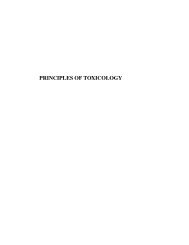Insect-pests - Biology East Borneo
Insect-pests - Biology East Borneo
Insect-pests - Biology East Borneo
Create successful ePaper yourself
Turn your PDF publications into a flip-book with our unique Google optimized e-Paper software.
Chapter 3<br />
General Scenario of Pests<br />
and Diseases in Natural Forests<br />
and Plantations in Indonesia<br />
K.S.S. Nair and Sumardi<br />
Conventional wisdom suggests that natural stands of<br />
tropical forests, characterised by high species<br />
diversity, are free of <strong>pests</strong> and diseases. Tropical<br />
forests are often quoted as examples that demonstrate<br />
the strong correlation between diversity and stability,<br />
in relation to pest and disease outbreaks. However, a<br />
critical study of the literature shows that there is more<br />
discussion than data on this relationship (Nair et al.<br />
1986). Plantations, on the other hand, characterised<br />
by even-aged stands of the same tree species are<br />
generally believed to be pest and disease prone. There<br />
is enough data to support this generalisation, although<br />
monocultures of some species may be pest or disease<br />
free. An overview of the general situation in natural<br />
forests and plantations in Indonesia is given below.<br />
3.1. Natural forests<br />
Published information on <strong>pests</strong> and diseases in natural<br />
forests of Indonesia is scarce. Kalshoven (1953)<br />
recorded some of the early instances of insect pest<br />
outbreaks, the highlights of which are given below.<br />
Natural stands of Pinus merkusii, Casuarina<br />
junghuhniana (syn. C. montana), Palaquium sp.,<br />
Actinophora fragrans and mangroves have suffered<br />
occasional pest outbreaks. Outbreaks of three species<br />
of insects are on record in pine stands, which cover<br />
an area of about 100 000 ha in North Sumatra, mainly<br />
in stands subjected to resin tapping. An undetermined<br />
species of the genus, Pteroma (a small bagworm<br />
belonging to the lepidopteran family Psychidae), has<br />
been the most serious. Severe outbreaks occurred in<br />
1924, 1933, and 1934-38, causing defoliation over<br />
large areas. The 1934-38 outbreak continued over a<br />
four-year period, during which repeated defoliation<br />
occurred, month after month. The damage was more<br />
serious on poorer sites. Another pine pest was a larger<br />
bagworm, Eumeta (Clania) variegata, a well-known<br />
polyphagous insect, but its outbreaks were less<br />
frequent. The third pest was also a lepidopteran<br />
(Geometridae) defoliator, Milionia basalis. Repeated<br />
outbreaks of this insect have been recorded, smaller<br />
outbreaks developing simultaneously in different places<br />
all over the pine stands. Our knowledge about these<br />
early outbreaks of pine insects was due to regular<br />
observations made by the resin and turpentine industry.<br />
No systematic observations are available for later<br />
periods, although outbreaks of other <strong>pests</strong> have been<br />
recorded in pine plantations.<br />
Occasional severe outbreaks of the caterpillar Voracia<br />
casuariniphaga (Lepidoptera, Lasiocampidae) occur<br />
in natural stands of Casuarina junghuhniana growing<br />
on mountain ridges and peaks in <strong>East</strong> Java. In an<br />
outbreak in February 1938 on Mt Lawu, 800 ha were<br />
totally stripped. Outbreaks of the caterpillar, Ophiusa<br />
serva (Noctuidae) have been recorded on Palaquium<br />
sp., which often constitutes 50% or more of the crop<br />
in some primary forests in South Sumatra. On the<br />
mangrove, Sonneratia acida, in an estuary at the Barito<br />
River in Southeast Kalimantan, a caterpillar<br />
provisionally identified as Lymantria galinara<br />
(Lymantriidae) caused defoliation of all trees on one<br />
occasion. More recently there was a near total<br />
defoliation of a mangrove species, Excoecaria
















